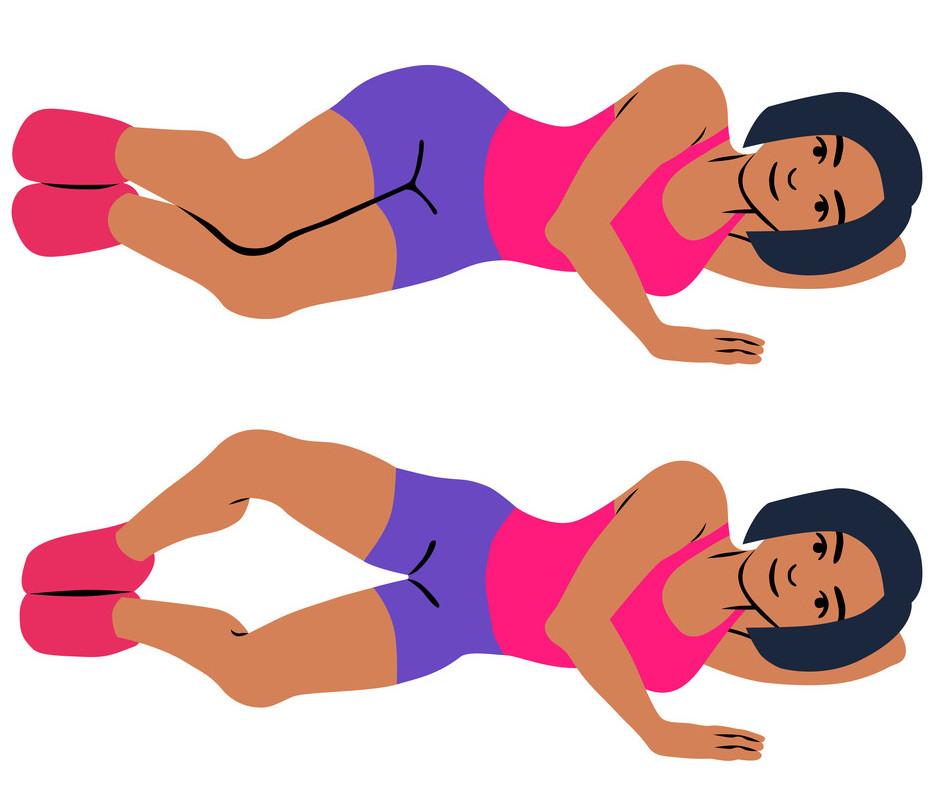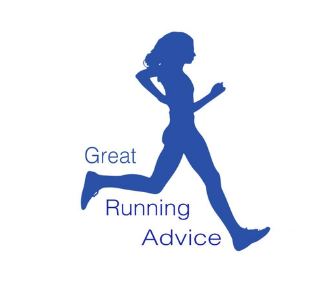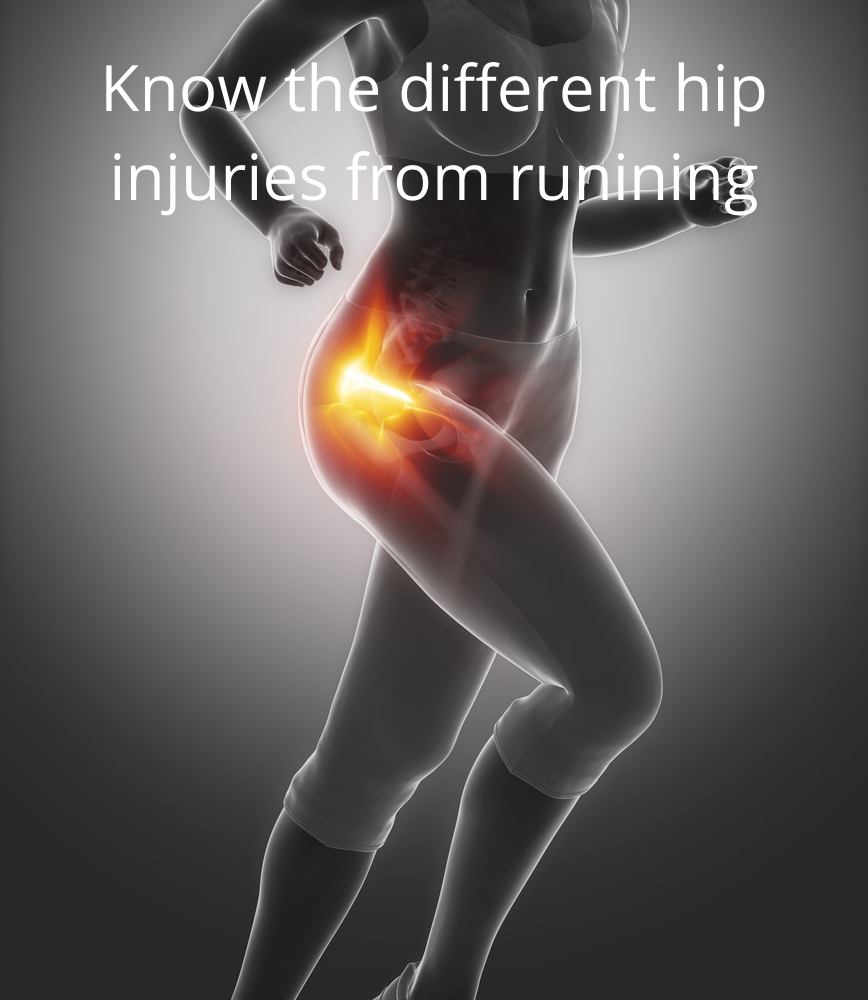Running is a great way to stay in shape but it can also lead to hip injuries. There are different types of hip injuries from running, and each requires treatment. We will look at hip flexor injuries, IT band syndrome, hip bursitis, labral tear, hip pointer, and hip fractures. Exercises help prevent hip injuries from happening in the first place. We should know the different hip injuries from running and how to treat and prevent them.
Hip Flexor Injuries
This is the most common hip injury from running. It occurs when the hip flexors are overused in the front of the leg. Symptoms include pain in the hip and groin and difficulty walking. Treatment includes rest, ice, and compression.
Exercises that can help prevent this injury include hip flexor stretches and glute bridges.

Hip flexor stretch. Kneel on your affected leg and bend your good leg out in front of you, with that foot flat on the floor. If you feel discomfort in the front of your knee, place a towel under your knee. Keep your back straight, and slowly push your hips forward until you feel a stretch in the upper thigh of your back leg and hip.
Glute Bridge: This exercise strengthens the glutes or buttocks muscles. To do this exercise, lie flat on your back with your feet hip-width apart and knees bent. Then, drive your heels into the ground, and lift your torso and upper legs into the air, extending your hips until your thighs and torso are aligned.
Iliotibial Band Syndrome
Iliotibial band syndrome is when your iliotibial band is a tendon that can rub against your hip or knee bones. (Cleveland clinic). Symptoms include pain on the side of the hip and thigh and difficulty walking. Treatment includes rest, ice, and compression. Exercises that can help prevent this injury include lateral walks and hip abductions.
Lateral walk: To do a lateral walk, stand with your feet hip-width apart and your hands on your hips. Shift your weight to one foot, and then slowly step out to the side. Keep your core engaged, and make sure to step through your heel. Then, step back to the starting position and repeat with the other leg.
Hip abduction: Stand with your feet hip-width apart and your hands on your hips to do a hip abduction. Shift your weight to one foot, then slowly lift the other leg to the side. Keep your core engaged, and make sure to lift your leg high. Hold for two seconds, then lower it back to the starting position. Repeat with the other leg.
Hip Bursitis
This injury occurs when the bursa, a sac of fluid that helps reduce friction between tissues, becomes inflamed. Symptoms include pain in the outer part of the hip, thigh, and buttock. Pain can also be felt when standing up, sitting down, or lying on the affected side. Treatment includes rest, ice, anti-inflammatory medication, and physical therapy. Exercises that can help prevent this injury include hip extensions and clamshells.

Hip Extension: Lie flat on your back with your feet on the ground to do a hip extension. Place your hands flat on the floor by your sides. Drive your heels into the ground, and lift your torso and upper legs into the air, extending your hips until your thighs and torso are aligned.
Clamshell: Lie flat on your back with your feet on the ground to do a clamshell. Place your hands flat on the floor by your sides. Keeping your core engaged, slowly lift your hips off the ground, and open your legs like a clam. Hold for two seconds, and then close them. Repeat.
Labral Tear
A labral tear is a type of hip injury that can be very difficult to treat. The labrum is a ring of cartilage that helps stabilize the hip joint. When this cartilage is damaged, it can cause pain and difficulty walking. There are many symptoms of labral tears, including pain in the groin, hip, or buttock, difficulty walking, and a clicking or popping sensation in the hip joint.
No exercise can prevent a labral tear from happening, but doing various exercises that strengthen the hips and glutes can help reduce your risk of injuring yourself.
Labral tears can be caused by many things, including overuse, trauma, or arthritis. They are more common in people who participate in sports that involve a lot of running, such as track and field or soccer. Labral tears can also occur in people who have had hip surgery.
Hip Pointer
A hip pointer is a deep bruise to the ridge of bone on the upper outside of your hip, called the iliac crest. A direct blow to the hip or a hard fall will cause a hip pointer injury. Hip pointer symptoms include pain and tenderness. Recovery from the injury usually involves taking a break from activity until it heals.
Hip Fractures
Hip fractures are not a common injury in runners. They are most commonly caused by falls but can also result from a direct blow to the hip. Symptoms of a hip fracture include pain, swelling, and bruising in the hip area. In severe cases, there may be difficulty walking or even standing, and also hip fractures can also be caused by osteoarthritis, resulting in brittle bones.
Hip fractures are treated with surgery followed by rehabilitation. The rehabilitation process typically includes exercises that improve strength and flexibility in the hip joint.
Final Thoughts
We have looked at hip injuries, such as hip flexor injuries, hip bursitis, IT band syndrome, lateral tears, hip pointer, and hip fractures, their causes, and how to rehabilitate them. I hope after reading this, you have a much greater understanding of all hip injuries. As always, feel free to comment if you have any questions or suggestions. And be sure to check back soon for more information on keeping your body healthy and injury-free.

